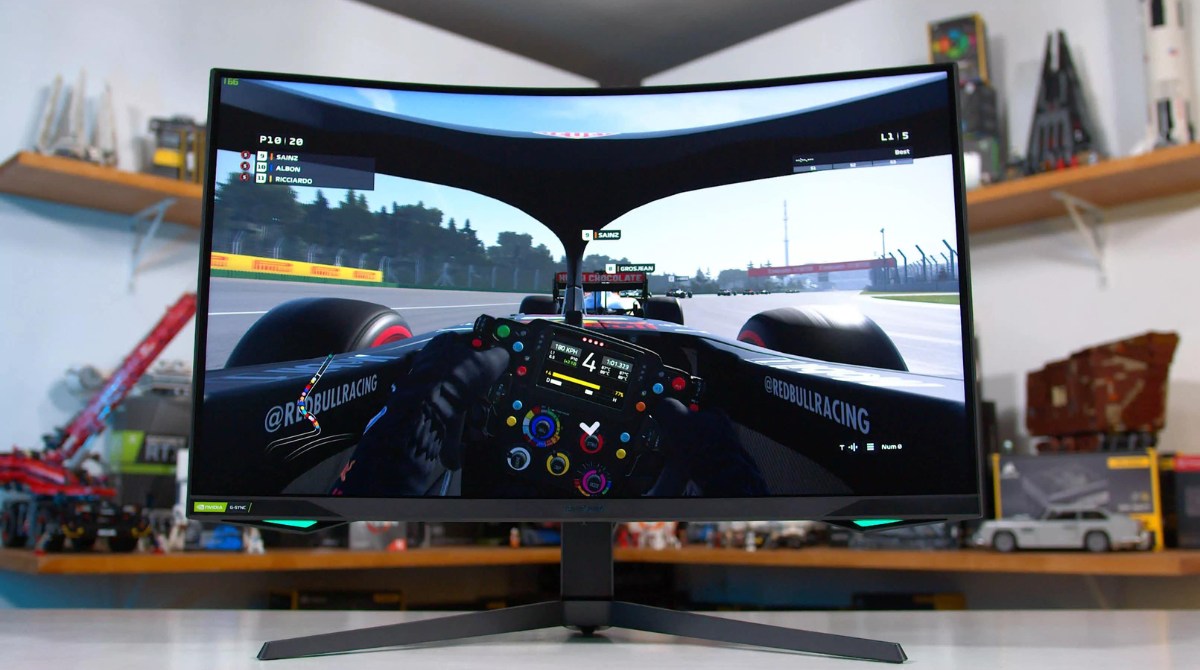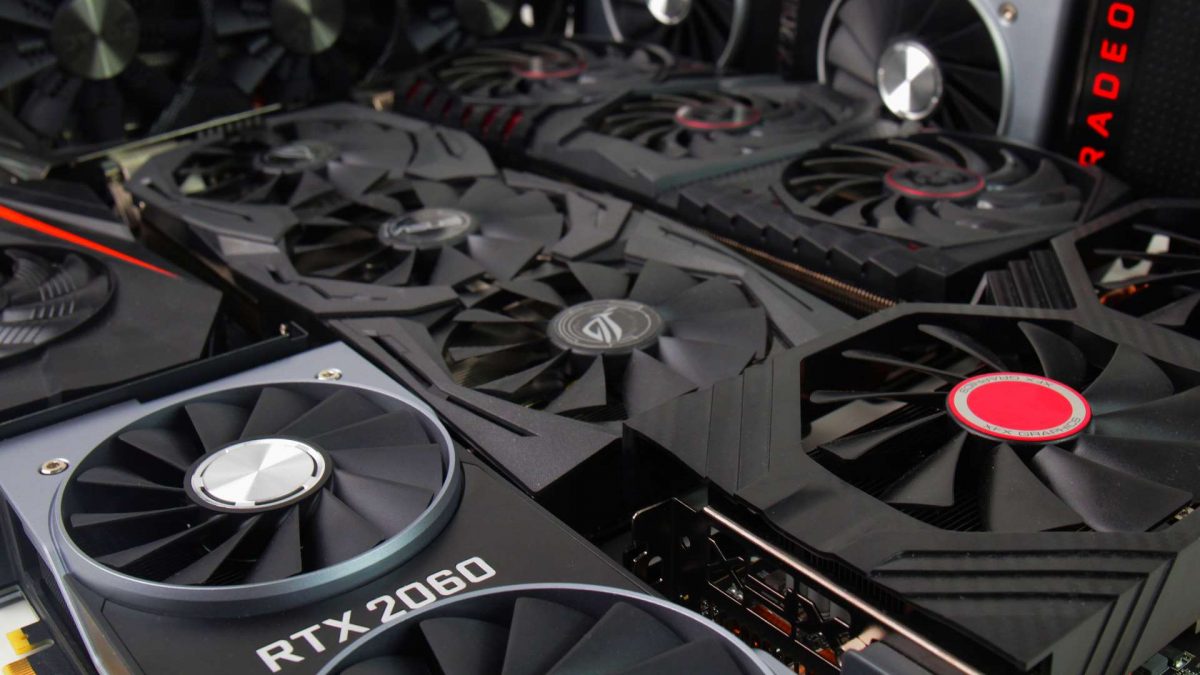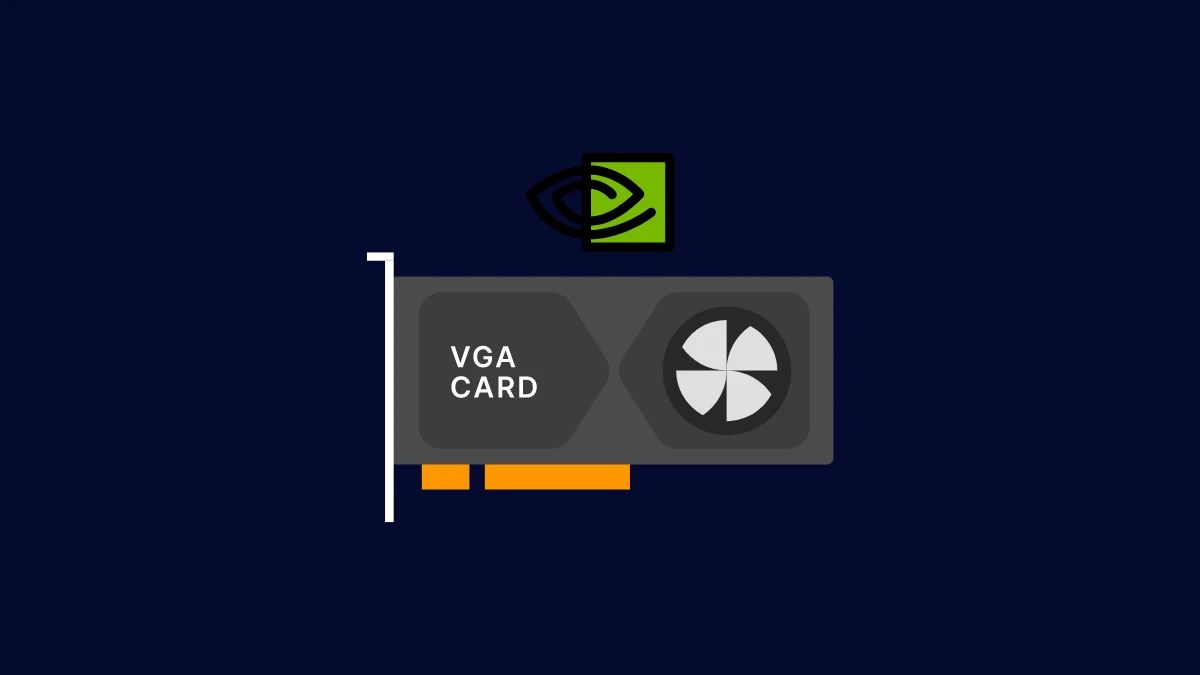Introduction
With the continuous advancements in gaming technology, gamers are constantly seeking immersive and realistic gaming experiences. One such technology that has gained popularity in recent years is 3D gaming. And at the heart of this technology is the 3D gaming monitor.
A 3D gaming monitor, as the name suggests, is a display device designed specifically to enhance the gaming experience by providing three-dimensional visuals. It allows gamers to enjoy their favorite games with depth and realism, making them feel like they are part of the virtual world.
But what exactly is a 3D gaming monitor? How does it work? What are its benefits and considerations when purchasing one? In this article, we will dive into the world of 3D gaming monitors, explore their functionality, and provide valuable insights to help you make an informed decision.
So, whether you’re a casual gamer looking to elevate your gaming experience or a professional gamer seeking that competitive advantage, read on to discover the exciting world of 3D gaming monitors and how they can transform your gaming sessions.
What is a 3D Gaming Monitor?
A 3D gaming monitor is a specialized display device that allows gamers to experience games in three dimensions, adding depth and realism to the visuals. Unlike traditional monitors that offer a two-dimensional viewing experience, 3D gaming monitors use advanced technology to create an illusion of depth, making objects and characters appear more lifelike.
These monitors utilize various techniques to achieve the 3D effect, including stereoscopic imaging and active shutter glasses. Stereoscopic imaging works by presenting slightly different images to each eye, simulating the way our eyes perceive depth in the real world. Active shutter glasses, on the other hand, are synced with the monitor to alternate between blocking the left and right eye lenses, allowing each eye to see a different perspective.
By displaying the game visuals in 3D, these monitors enhance the overall gaming experience, making it more immersive and engaging. Gamers can perceive depth in the game’s environments, see objects and characters pop out from the screen, and gain a better sense of spatial awareness, leading to improved gameplay and a heightened sense of realism.
It’s important to note that not all games are compatible with 3D technology, and the level of 3D immersion can vary depending on the quality of the game’s 3D implementation. However, many popular games, especially those in genres such as first-person shooters and racing simulations, offer excellent 3D support and are optimized for use with 3D gaming monitors.
In addition to gaming, 3D monitors can also be used for other multimedia purposes, such as watching 3D movies, viewing 3D photos, or even creating 3D content. However, their primary focus remains on the gaming experience, offering gamers a unique opportunity to step into a world that feels more lifelike and immersive than ever before.
Now that we have a basic understanding of what a 3D gaming monitor is and how it works, let’s explore the benefits that come with using one.
How Does a 3D Gaming Monitor Work?
A 3D gaming monitor relies on specific technologies to create the illusion of depth and deliver a three-dimensional gaming experience. The two primary techniques used in 3D gaming monitors are stereoscopic imaging and active shutter glasses.
Stereoscopic imaging is based on the concept that our brain perceives depth when our eyes view slightly different images. 3D gaming monitors utilize this concept by displaying two separate images, one for each eye, with a slight offset. These images are then rapidly swapped back and forth on the screen, typically at a high refresh rate, allowing each eye to see a slightly different perspective. This creates the perception of depth in the displayed game environment. To fully experience this effect, gamers must wear special 3D glasses.
Active shutter glasses work in tandem with the 3D gaming monitor to further enhance the 3D effect. These glasses are designed to alternate between blocking the left and right eye lenses in sync with the monitor’s display. When the left lens is blocked, the screen presents the image intended for the right eye, and vice versa. The rapid alternation of images ensures that each eye sees the correct perspective, resulting in a more immersive and realistic 3D experience.
Modern 3D gaming monitors often come equipped with features like high refresh rates and low response times to further enhance the visual experience. Higher refresh rates, such as 120Hz or 144Hz, allow for smoother motion rendering, reducing motion blur and providing a more fluid gaming experience. Low response times ensure minimal lag between user input and on-screen action, resulting in faster and more responsive gameplay.
It’s worth noting that not all 3D gaming monitors require the use of active shutter glasses. Some models utilize autostereoscopic technology, also known as glasses-free 3D. These monitors use a lenticular lens or parallax barrier to create multiple viewing angles for each eye, eliminating the need for special glasses. However, autostereoscopic displays may have limited viewing angles and require the user to sit at a specific distance and angle to perceive the 3D effect properly.
Overall, the combination of stereoscopic imaging, active shutter glasses, and additional display features enables 3D gaming monitors to deliver an immersive and exciting gaming experience. Now, let’s explore the benefits of using a 3D gaming monitor.
Benefits of Using a 3D Gaming Monitor
Using a 3D gaming monitor offers a multitude of benefits that enhance your gaming experience and take it to the next level. Let’s explore some of the key advantages of gaming in 3D.
1. Immersive Gaming Experience: The primary advantage of a 3D gaming monitor is the immersive experience it provides. By adding depth to the visuals, 3D gaming makes the virtual world feel more realistic and engrossing. You’ll feel like you’re right in the middle of the action, whether you’re exploring alien planets, racing through vibrant landscapes, or engaging in intense battles.
2. Enhanced Depth Perception: With a 3D gaming monitor, you’ll experience improved depth perception in games. This heightened sense of depth allows you to better judge distances, sizes, and spatial relationships within the game world. It can considerably improve your gameplay, especially in situations that require precision and quick decision-making.
3. Immersive Visual Effects: 3D gaming monitors bring visual effects to life like never before. Explosions, particle effects, and environmental details can appear more dynamic and captivating in 3D. The added depth and dimensionality lend a greater sense of realism to these effects, making your gaming experience more visually engaging and exciting.
4. Eye-Catching Depth for Cinematics: Many modern games include cinematic cutscenes to tell stories and immerse players in the narrative. With a 3D gaming monitor, these cutscenes become even more visually captivating. The added depth enhances the cinematic experience, allowing you to feel more connected to the characters and events unfolding on the screen.
5. Competitive Advantage: In certain gaming genres, having a 3D gaming monitor can provide a competitive edge. The improved depth perception and enhanced visuals can give you a better understanding of your surroundings and the actions of other players or AI opponents. This can help you react faster, make more accurate shots, and outmaneuver your adversaries.
6. Versatility Beyond Gaming: While primarily designed for gaming, 3D monitors can also be used for other entertainment purposes. You can watch 3D movies, enjoy 3D Blu-ray discs, or view 3D photos right on your monitor. It adds another dimension of entertainment to your multimedia experience.
7. Future-Proof Investment: Investing in a 3D gaming monitor is a future-proof decision. As gaming technology continues to evolve, more games and content will be optimized for 3D experiences. By having a 3D gaming monitor, you’ll be ready to fully enjoy these future advancements without the need for additional hardware upgrades.
8. Unique Gaming Experience: Ultimately, using a 3D gaming monitor offers a unique and immersive gaming experience. It allows you to dive deeper into the virtual worlds, connect with the games on a more personal level, and enjoy gaming like never before.
In the next section, we’ll discuss the factors you should consider when purchasing a 3D gaming monitor.
Factors to Consider When Buying a 3D Gaming Monitor
When purchasing a 3D gaming monitor, there are several important factors to consider to ensure that you choose the right monitor that suits your needs and preferences. Let’s explore these factors in detail:
1. Display Technology: There are different display technologies available for 3D gaming monitors, such as LCD, LED, and OLED. Each technology has its own advantages and disadvantages in terms of image quality, color accuracy, and response times. Consider your budget and prioritize the display technology that aligns with your preferences.
2. Refresh Rate and Response Time: A high refresh rate, typically 120Hz or higher, ensures smoother motion rendering and reduces motion blur, resulting in a more fluid gaming experience. Additionally, look for a monitor with a low response time, ideally below 5ms, to minimize input lag for faster and more responsive gameplay.
3. Screen Size and Resolution: Consider the size and resolution of the monitor based on your gaming preferences and available space. A larger screen size allows for a more immersive gaming experience, but keep in mind the viewing distance and the space available on your gaming desk. Additionally, higher resolutions, such as 1440p or 4K, provide sharper visuals with more detail, but also require a more powerful graphics card to drive the monitor effectively.
4. 3D Technology: There are different types of 3D technologies used in gaming monitors, including active shutter glasses and autostereoscopic (glasses-free) solutions. Consider which type of 3D technology you prefer and ensure that the monitor supports it. Keep in mind that glasses-free 3D displays may have limitations regarding viewing angles and distance.
5. Compatibility: Ensure that the 3D gaming monitor you choose is compatible with your gaming system. Check if the monitor supports the required inputs (HDMI, DisplayPort, etc.), and if it is compatible with your graphics card’s 3D technologies, such as NVIDIA 3D Vision or AMD HD3D.
6. Connectivity Options: Consider the connectivity options available on the monitor, such as HDMI, DisplayPort, and USB ports. Having multiple connectivity options allows for easy connection to gaming consoles, PCs, or other peripherals, providing flexibility for your setup.
7. Price and Value: Set a budget for your 3D gaming monitor and research various models within your price range. Compare the features, specifications, and customer reviews to determine the best value for your money. Remember that a higher price does not necessarily guarantee better performance, so consider your gaming needs and prioritize accordingly.
8. Additional Features: Some 3D gaming monitors come with additional features like built-in speakers, adjustable stands, ergonomic design, and gaming-specific enhancements like AMD FreeSync or NVIDIA G-Sync for smoother gameplay. Consider these additional features based on your preferences and requirements.
By considering these factors, you can make an informed decision when purchasing a 3D gaming monitor that meets your gaming expectations and provides an immersive and enjoyable gaming experience. Next, we’ll explore some of the popular 3D gaming monitors available in the market today.
Popular 3D Gaming Monitors in the Market
When it comes to 3D gaming monitors, there are several popular options available in the market that offer excellent performance and immersive gaming experiences. Let’s take a look at some of these popular 3D gaming monitors:
1. Asus ROG Swift PG279QZ: This monitor features a 27-inch IPS panel with a 1440p resolution, a 165Hz refresh rate, and NVIDIA G-Sync technology for smooth gameplay. It offers excellent color accuracy and wide viewing angles, making it a top choice for gamers seeking a high-quality visual experience.
2. Acer Predator X27: The Predator X27 boasts a 27-inch 4K UHD display with a 144Hz refresh rate and G-Sync HDR technology. With its high-resolution visuals, HDR support, and vibrant colors, it provides an immersive and visually stunning gaming experience.
3. BenQ EX3203R: This curved 32-inch monitor offers a QHD resolution, a 144Hz refresh rate, and support for AMD FreeSync 2 technology. It delivers smooth gaming performance, vibrant colors, and an immersive curved display, making it a great choice for gamers looking for a more immersive experience.
4. LG 27GL850-B: The LG 27GL850-B is a 27-inch Nano IPS monitor with a QHD resolution and a 144Hz refresh rate. It features NVIDIA G-Sync compatibility and offers excellent color accuracy and wide viewing angles. With its fast response time and smooth performance, it’s a popular choice among competitive gamers.
5. Samsung Odyssey G7: The Odyssey G7 is a curved gaming monitor available in both 27-inch and 32-inch variants. It offers a QHD resolution, a 240Hz refresh rate, and support for both G-Sync and FreeSync 2 technologies. With its impressive refresh rate and high-quality display, it’s designed for gamers who want the best in terms of speed and visual fidelity.
6. ViewSonic XG2402: For gamers on a budget, the ViewSonic XG2402 is a 24-inch monitor with a Full HD resolution, a 144Hz refresh rate, and AMD FreeSync technology. It provides smooth gameplay and excellent color accuracy, making it a popular choice for those looking for an affordable 3D gaming monitor.
These are just a few examples of popular 3D gaming monitors available on the market. It’s important to consider your specific needs, preferences, and budget when making a decision. Research customer reviews and compare the features and specifications of different models to find the one that best suits your gaming requirements.
In the next section, we’ll provide some tips for optimizing your 3D gaming experience.
Tips for Optimizing Your 3D Gaming Experience
Once you have a 3D gaming monitor, there are several tips and techniques you can implement to enhance your 3D gaming experience. Let’s explore some of these optimization tips:
1. Adjust 3D Settings: Most 3D gaming monitors allow you to customize and adjust various 3D settings. Take the time to explore these settings and find the optimal configuration for your gaming preferences. Experiment with depth levels, convergence, and other settings to achieve the best balance between depth and comfort.
2. Set Up the Monitor Correctly: Properly calibrate your 3D gaming monitor for optimal image quality. Adjust settings such as brightness, contrast, and color accuracy to ensure accurate and vibrant visuals. Refer to the manufacturer’s instructions or use calibration tools to get the best possible display settings.
3. Play Supported 3D Games: Not all games support 3D, so make sure you play games that are specifically designed or optimized for 3D gaming. Look for games that have proper 3D implementation and support features like native stereoscopic 3D support or compatibility with 3D technologies like NVIDIA 3D Vision or AMD HD3D.
4. Experiment with Depth Effects: Some 3D games offer additional depth effects that can further enhance the 3D experience. These effects can include depth-of-field blur, increased depth perception, or dynamic parallax. Experiment with these settings to find the combination that provides the most immersive and visually appealing experience.
5. Consider Ambient Lighting: The lighting conditions in your gaming environment can affect the 3D experience. Dim the ambient lighting in the room or use bias lighting behind the monitor to reduce eye strain and improve contrast perception. Avoid direct light sources that may cause glare on the monitor and affect your viewing experience.
6. Take Breaks and Rest Your Eyes: Gaming in 3D can be visually intensive, so remember to take regular breaks to rest your eyes and prevent fatigue. Staring at 3D visuals for an extended period can cause eye strain and discomfort. Use the 20-20-20 rule: every 20 minutes, look at something 20 feet away for at least 20 seconds to give your eyes a break.
7. Optimize Your Gaming Rig: Ensure that your gaming system meets the hardware requirements for 3D gaming. Update your graphics card drivers regularly to ensure compatibility and performance. Keep your system clean from unnecessary software and processes that may affect gaming performance. A smooth and responsive gaming rig enhances the overall 3D experience.
8. Experiment and Have Fun: Every gamer’s preferences are unique, so don’t be afraid to experiment with different settings and configurations to find what works best for you. Enjoy the process of discovering new dimensions in your favorite games and have fun exploring the immersive worlds that 3D gaming has to offer.
Implementing these tips will help you optimize your 3D gaming experience and make the most out of your 3D gaming monitor. It’s time to dive into the world of 3D gaming and enjoy the enhanced visuals and immersive gameplay it brings!
Conclusion
3D gaming monitors have revolutionized the gaming experience, offering players a new level of immersion and realism. They bring games to life with their ability to display visuals in three dimensions, creating a sense of depth and detail that traditional monitors cannot match.
Throughout this article, we’ve explored what 3D gaming monitors are and how they work. We’ve discussed the benefits they provide, such as an immersive gaming experience, enhanced depth perception, and eye-catching visual effects. We’ve also highlighted important factors to consider when purchasing a 3D gaming monitor, including display technology, refresh rate, resolution, and compatibility.
In addition, we’ve shared some popular 3D gaming monitors available in the market, ranging from high-end options with advanced features to budget-friendly choices for gamers on a tight budget. We’ve also provided tips for optimizing your 3D gaming experience, including adjusting 3D settings, setting up the monitor correctly, and playing supported 3D games.
It’s important to keep in mind that while 3D gaming monitors offer a captivating experience, not all games are optimized for 3D use. It’s recommended to choose games specifically designed or adapted for 3D gaming to fully leverage the benefits of your 3D gaming monitor. Additionally, taking breaks and optimizing the gaming environment will help prevent eye strain and maintain a comfortable gaming experience.
In conclusion, investing in a 3D gaming monitor can elevate your gaming sessions to a whole new dimension. The immersive visuals, enhanced depth perception, and unique gaming experiences they offer make them a compelling choice for gamers seeking a more engaging and realistic gameplay. Consider your budget, preferences, and the specific requirements of your gaming rig when selecting a 3D gaming monitor, and enjoy the thrilling world of 3D gaming that awaits you.

























